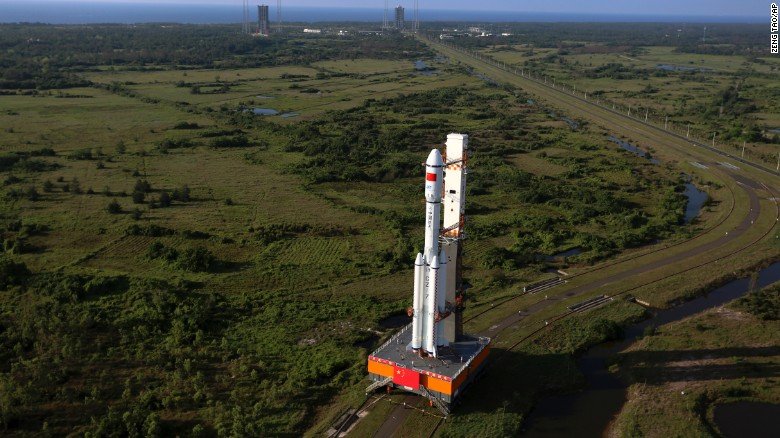China launched its first space truck into orbit

The Chinese government continues to develop the space program, and quite successfully. Today, the Chinese launched into space the first national cargo spacecraft Tianzhou-1 (Heavenly Ship-1). The launch was carried out with the help of the Chinese carrier Changzheng-7 at 14:41 Moscow time from the Wenchang cosmodrome in Hainan province.
The truck will deliver about 6 tons of payload to orbit, including scientific equipment, fuel and other things. The cargo is intended for the Tyangun-2 space station. According to the plan, the truck must dock three times in orbit with the station for testing and refueling the Tyangun-2 with fuel.
The chief designer of the space truck, Bai Minsheng, said that the first docking with the Tyangun-2 was scheduled for April 22, the second for June of this year. According to the plan, scientists and engineers of China will test various control modes of both the truck and the orbital station, making docking from different directions. The third docking is planned to be carried out in an accelerated mode, writes "TASS".
')
It takes about a week to refuel the Tyangun-2. So far this is only one of the three planned modules. The Chinese station will consist of three parts, including one main module and a laboratory unit. The weight of each module is about 20 tons.
The Tianzhou-1 is a medium-sized rocket, using liquid oxygen and kerosene as a fuel. In addition to conventional cargo, it can put satellites and other spacecraft into orbit.
The Space Agency of China has previously announced plans to fly to the Moon in 2018 and to Mars in 2020. Also, the Chinese government, together with scientists and engineers, is considering the possibility of sending probes to Jupiter and its satellites.
In mid-November, two Chinese astronauts returned to Earth, having spent about a month in space, in the Tyingun-2 module. "So far, this is China ’s longest mission in space.
In addition to space flights, China is working on the implementation of a number of ground stages of its space program. For example, in September, scientists launched the world's largest radio telescope with an antenna disk diameter of 500 meters. According to the plan, this telescope will help in the search for extraterrestrial intelligence.
Among other projects, China is now busy developing a reusable rocket for flights to the moon. Earlier this year, the Chinese newspaper People's Daily reported that China had begun developing its own reusable spacecraft. Engineers and scientists are working on this project on-line so that China cannot get ahead of foreign competitors.
On the Moon, representatives of the Celestial Empire are going to establish a settlement, as well as to produce the helium-3 isotope, which can serve as an almost ideal fuel for fusion reactors.
As part of the development of its space program, the Chinese plan to launch 110 rocket launches in just 5 years. Among all countries, this is the densest schedule of launches.
Source: https://habr.com/ru/post/373389/
All Articles